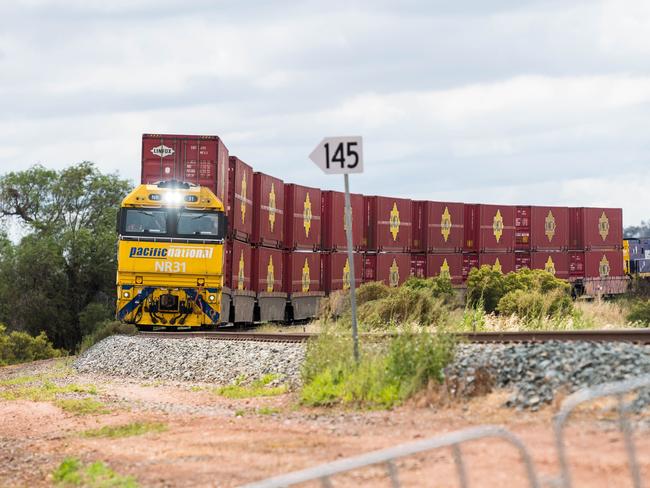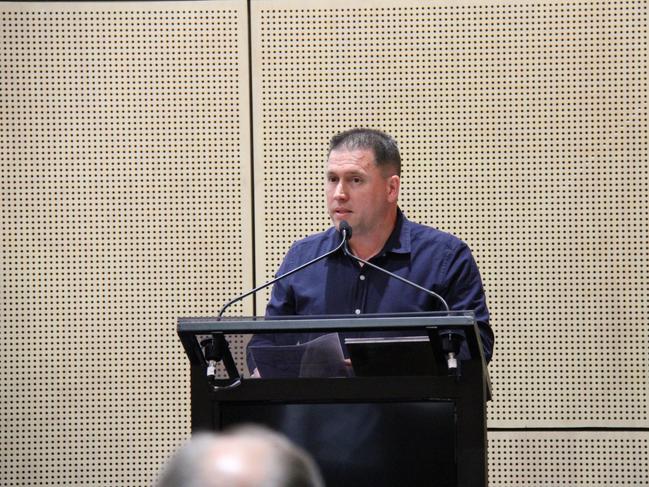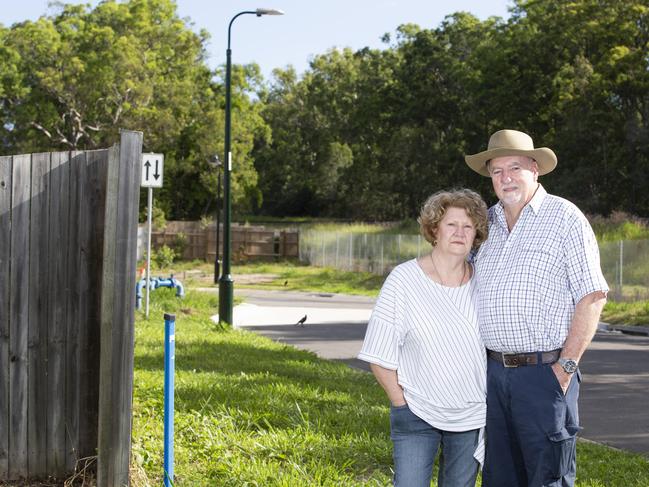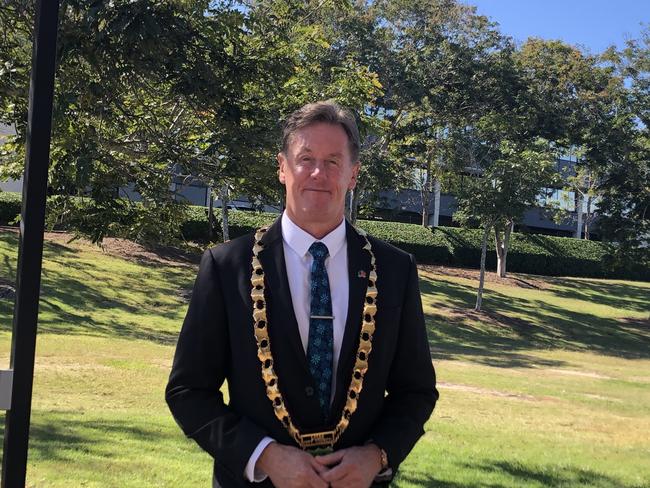Inland Rail: Senate Inquiry report promotes Gladstone route
The Senate Inquiry into the management of the Inland Rail project has handed down its report and it has an exciting outcome for Gladstone.

Gladstone
Don't miss out on the headlines from Gladstone. Followed categories will be added to My News.
‘Derailed from the start’ is the subtitle of the Senate Inquiry’s report into the management of the Inland Rail project.
The report was handed down on Wednesday evening, August 11, after almost two years and several delays.
The inquiry was made up of 14 senators from across the political spectrum and they have now concluded the $14.3 billion project was based on an outdated 2015 business case and was undermined by predictions it could blow out to more than $20 billion.
It was concluded this cost could undermine the business case and ‘casts doubt over the ARTC and the Australian Government’s capacity to manage the project’.
Senators compiled a list of 26 recommendations for the project, many which are directed to the controversial route through Queensland.
Recommendation two states than an independent review of the 2015 business case that includes a publicly available review and sensitivity analysis on all possible routes from Melbourne to Brisbane and Gladstone.
The report also states that a vital feature of Inland Rail is its connectivity to sea ports and other intermodal facilities such as Toowoomba’s Interlink SQ.
The committee heard the reason why direct connectivity to the Port of Brisbane wasn’t considered was because the Acacia Ridge route could meet demand until at least 2040 and would ‘not require transhipment at landside intermodal terminals’. Some goods wouldn’t need to be, or could not be, double stacked.
But many stakeholders such as the Port of Brisbane disagreed because the existing line was not sufficient, particularly if it had to share the line with a passenger network.
A study into the connection to the Port of Brisbane is expected to be handed down in 2022.
The committee also heard about the 2021 AEC study into the Toowoomba to Gladstone Corridor, commissioned by the Central Queensland Regional Organisation of Councils (CQROC) and Regional Development Australia and Western Queensland.
The report noted a $4.8 billion reduction of cost if the line terminated at Gladstone and would have a cost to benefit of $1.58 per dollar spent, as opposed to Brisbane’s $1.01.
The report recommended that the Inland Rail should be constructed and linked to both the Gladstone and Brisbane ports and called for the Queensland and federal governments to thoroughly investigate the Gladstone route.
The report also recommended publicly releasing a study into the long-awaited study into passenger rail from Toowoomba to Brisbane and consider an option that will allow for seamless transport of freight.

Victory for Central Queensland
Gladstone Region mayor and Labor candidate for Flynn Matt Burnett described the recommendations as a ‘victory for Central Queensland.’
“We could not have asked for a better outcome,” Mr Burnett said.
“Years of fighting for this project to connect to Gladstone have paid off.
“But the fight isn’t over yet.
“Local Government has led the way to date. This is a nation building project.
“What we need now is for the Federal Government to agree to the Senate recommendations and fund this thorough investigation to connect the Inland Rail project to the port of Gladstone.”
“Clearly, Senate inquiry recommendation eight states that we need to fund a thorough investigation into the extension of the project into the Port of Gladstone,” Mr Burnett said.
Mr Burnett said he had been fighting for the extension of the Inland Rail project to the port of Gladstone for many years.
“I am calling on the Federal Government to take the lead and fund that investigation, obviously supported by the Queensland Government.
“Local government, we have already funded the AEC report. Today we need the Federal Government to get on board as well.”
Mr Burnett said he had pinpointed three key recommendations of the 26 from the Report which could decide the future of the Inland Rail’s direction:
Project still problematic for southeast Queensland

But some southeast Queensland residents are still concerned about the state of the Inland Rail projects.
They have long maintained that the line does not need to go to Brisbane and should be terminated at Toowoomba or Gladstone.
Inland Rail Action Group leaders Stan and Suz Corbett who live in rural Logan slammed the report for not addressing the ‘50,000 forgotten’ residents’ grievances, when other communities on the Darling Downs and Central Queensland had their voices heard.
Mrs Corbett said the recommendation to send it to both Gladstone and Brisbane would not save any funding.
Mr Corbett criticised the proposal to end the line at Bromelton as it would then need to be trucked up the single-lane Mount Lindesay Highway and put on the existing rail corridor running through Logan neighbourhoods.
However, he agreed with the report’s criticism of the proposal that the line needs to get trains from Melbourne to Brisbane or Gladstone within 24 hours, a concern highlighted in the report.
“No one really knows what’s driving this 24 hours,” he said.
“The Senate Inquiry report says exactly that - it’s caused so much problems with the community, cutting through so many properties and towns and not using almost parallel railway corridors that exist, just to save a few minutes, and no one knows why we’re saving it.”
They said it was now up to Deputy Prime Minister Barnaby Joyce to make the right call and he should consider the route, the 24 hour requirement, terminating at Toowoomba or Dalby, as well as disclosing why some people wished for the line to go to Brisbane.
“We can start building the link to Gladstone right now,” Mr Corbett said.
“It’s already got its EIS, it’s already got its basic engineering already done, the route’s been defined, there’s no major obstacles or bridges or viaducts.”

But Logan mayor Darren Power saw a silver lining in the report, praising the recommendation of a “rigorous, transparent and consultative impact assessment of the Kagaru and Acacia Ridge to Bromelton project”.
“Council and our community have long been vocal about the catastrophic impacts of the project through the K2ARB section,” Mr Power said.
“The route was selected without consultation and residents did not get an opportunity to influence route selection or offer alternatives.
“Our residents will bear the brunt of noise, vibration and air quality issues, with almost 40,000 residents projected to live within 1km of the rail corridor by 2041.”
Mr Power said the council had long called for it to be a co-ordinated project and to be subjected to rigorous assessment processes.
“It’s the most densely-populated section in Queensland and also the only section not facing that level of assessment,” Mr Power said.
“That’s why council has now endorsed a list of actions that we want the Queensland and Australian Governments to agree to for our community’s protection.
“I hope the committee’s recommendations are strongly considered by the ARTC and the Australian Government to ensure the best outcome for the City of Logan and our residents.
“In the meantime, we will continue to shout our concerns from the rooftops – especially during the next federal election – to ensure the best outcomes for our community.”
Read the full report here.



